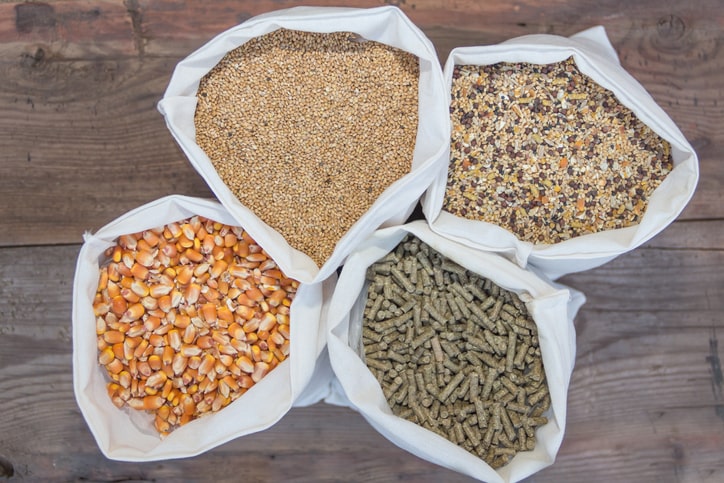As a dedicated poultry enthusiast, it’s natural to worry about the health and safety of your flock. One of the pressing issues that many face is the problem of what to do with moldy chicken feed. Moldy feed not only impacts the health of your chickens but also poses risks to the entire farm environment. Managing this issue effectively is crucial, and it’s important to understand the steps you need to take to ensure the well-being of your poultry.

Understanding the Problem of Moldy Chicken Feed
Mold spores are ubiquitous and can quickly contaminate chicken feed if not stored properly. Once mold develops, it can produce mycotoxins, which are toxic compounds that have severe health effects on chickens. Addressing the issue immediately is paramount to preventing potential outbreaks of illness within your flock.
Signs of Moldy Chicken Feed
- Visible mold growth
- Unpleasant, musty odor
- Clumping or caking of feed
- Discoloration or dampness

Steps to Safely Handle Moldy Chicken Feed
Step 1: Identifying Mold Contamination
The first step involves identifying if your chicken feed is actually contaminated with mold. Look for the key signs mentioned above. If you detect any of these, it’s a clear indication of mold presence.
Step 2: Immediate Disposal of Affected Feed
Once you have confirmed mold growth, you must dispose of the contaminated feed immediately. Avoid feeding it to your chickens as it poses significant health risks. Instead, double-bag the affected feed and dispose of it properly to prevent the spread of mold spores.

Preventive Measures to Avoid Moldy Chicken Feed
Proper Storage Techniques
One of the most effective ways to prevent mold growth is by ensuring proper storage of your chicken feed. Store feed in a cool, dry place and use airtight containers to keep moisture and pests away. Elevated storage racks can also help in maintaining air circulation around the containers.
Regular Inspection and Maintenance
Make it a routine to inspect your feed regularly. Check for any signs of mold or moisture. Rotate your stock to ensure the oldest feed is used first, minimizing the chances of it becoming moldy.
Environmental Control
Maintaining a clean and dry environment is crucial. Ensure that the feed storage area is well-ventilated and free from dampness. Using dehumidifiers can be a great way to control the humidity levels.

Health Impacts of Moldy Feed on Chickens
Feeding moldy feed to chickens can lead to several health complications, including respiratory problems, liver damage, immune suppression, and even death in severe cases. Understanding these risks underscores the importance of preventing and managing mold contamination effectively.
Common Symptoms of Affected Chickens
- Lethargy and weakness
- Reduced feed intake
- Respiratory issues
- Decreased egg production
For more information on chicken breeds and their specific needs, you might find this list of chicken breeds helpful.
Alternative Uses for Moldy Chicken Feed
Composting Moldy Feed
One of the environmentally friendly ways to deal with moldy feed is by composting it. Moldy feed can be a valuable addition to your compost pile, contributing to the creation of rich, fertile soil. However, ensure that it is mixed well with other compost materials to accelerate the decomposition process.
Garden Mulch
Moldy chicken feed can also be used as a mulch in gardens, providing essential nutrients to plants. Spread the feed around the base of plants, ensuring it doesn’t touch the stems directly to prevent mold transfer.
Integrating Technology for Better Feed Management
Advanced Storage Solutions
Modern technology offers advanced solutions to prevent mold growth. Automated climate control systems can monitor and maintain optimal storage conditions, significantly reducing the risk of mold contamination.
Innovative Feed Monitoring Devices
New devices are available that can monitor the condition of the feed and alert you to any changes in moisture levels or temperature. Investing in such technology can be a game-changer in maintaining the quality of your chicken feed.
Community Insights
Sharing experiences and insights with fellow poultry enthusiasts can be immensely beneficial. Participate in community forums and social media groups to exchange tips and learn from others who might have dealt with similar issues.
Case Studies
Reading case studies and research articles can provide valuable information on effective mold management strategies. Universities and agricultural extensions often publish detailed reports that can guide you in making informed decisions.
Frequently Asked Questions
Can moldy chicken feed be detoxified?
Detoxifying moldy feed can be challenging, and it’s generally safer to dispose of it to avoid any health risks.
What should I do if my chickens have eaten moldy feed?
If you suspect your chickens have consumed moldy feed, monitor them closely for any signs of illness and consult a veterinarian immediately.
How can I prevent mold growth in the future?
Proper storage, regular inspections, and maintaining a clean environment are key to preventing mold growth in chicken feed.
For more tips and tricks on managing your flock, check out our articles on chicken size, jumbo eggs, and tasting breed.
As an Amazon Associate, I earn from qualifying purchases.







